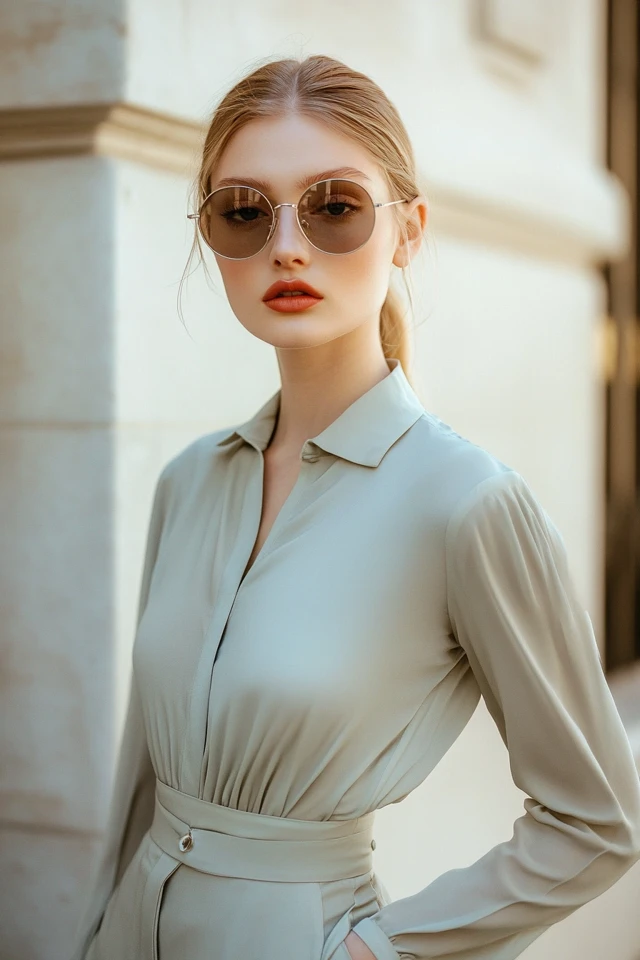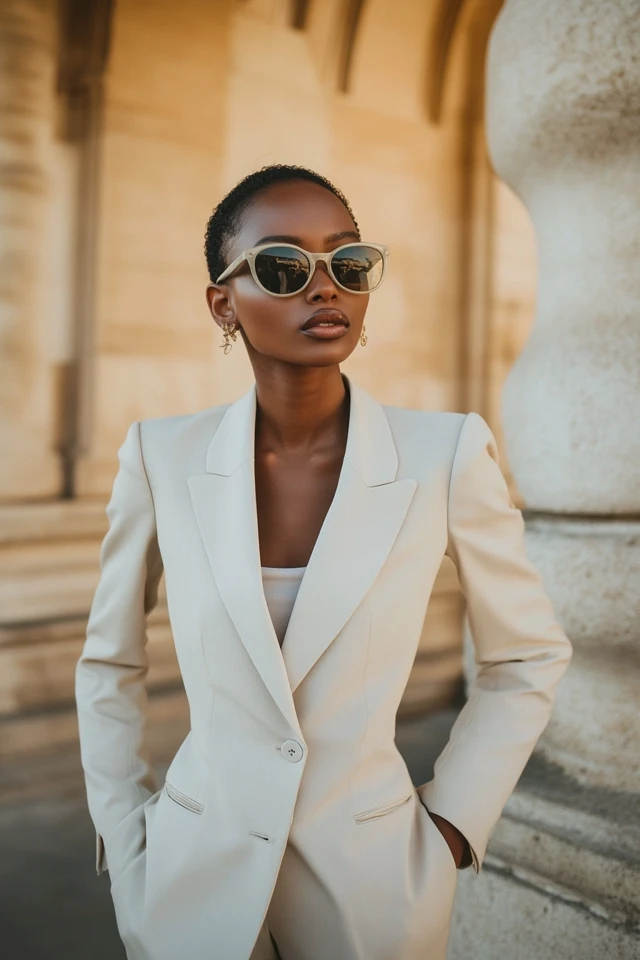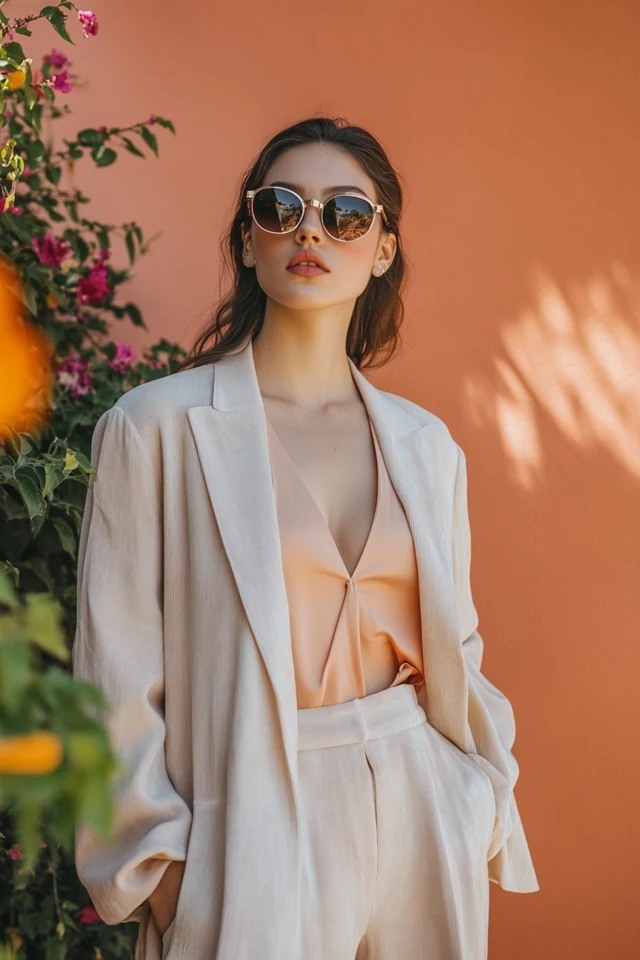One of the most transformative aspects of creating a capsule wardrobe is selecting a cohesive color palette. While the idea of narrowing down your wardrobe to just a few colors may seem limiting at first, it’s actually the key to making your outfits feel intentional, versatile, and effortless. A thoughtfully chosen color palette ensures that every piece in your closet works together seamlessly, allowing you to mix and match without worrying about clashing tones.
When I first started my capsule wardrobe journey, I made the mistake of buying pieces I loved individually without considering how they would work together. I ended up with a rainbow of clothes that didn’t mix well, which made getting dressed a frustrating and time-consuming process. Once I learned how to build a color palette, everything changed. My wardrobe became a cohesive collection of pieces that complemented each other, and putting outfits together became a joy instead of a chore.
About the Author and My Trend Boutique
In this guide, we’ll explore how to choose the perfect color palette for your capsule wardrobe. Whether you’re drawn to classic neutrals, bold statement colors, or soft pastels, you’ll learn how to create a palette that reflects your personal style and enhances the versatility of your wardrobe.
Foundational Concepts: Why a Color Palette Is Essential
A color palette serves as the foundation of your capsule wardrobe, bringing harmony and versatility to your outfits. Instead of owning a random assortment of colors that clash, you’ll have a cohesive set of shades that work beautifully together.
The Benefits of a Cohesive Color Palette:
- Effortless Mixing and Matching: A unified palette ensures that every piece in your wardrobe pairs seamlessly with others.
- Time-Saving: Choosing an outfit becomes faster and easier when your colors naturally complement one another.
- Polished Style: A consistent color scheme creates a sense of intentionality and sophistication in your overall look.
- Minimalism in Practice: Limiting your wardrobe to a curated palette reduces clutter and simplifies your closet.
- Personal Expression: Your color palette is a reflection of your unique style and personality, helping you feel more confident in what you wear.
A well-chosen color palette doesn’t just make your wardrobe more functional—it also enhances your ability to create outfits that feel polished and harmonious.
Picture Gallery








Step-by-Step Guide to Choosing a Color Palette for Your Capsule Wardrobe
Selecting a color palette is a personal process that requires a bit of self-reflection, planning, and experimentation. Follow these steps to create a palette that suits your style, lifestyle, and preferences.
Step 1: Assess Your Personal Style and Preferences
Start by thinking about the colors you’re naturally drawn to and feel confident wearing. Look at your existing wardrobe and note any recurring shades.
- Do you gravitate toward classic neutrals, earthy tones, or vibrant hues?
- Are there any colors you love but never wear?
- What shades make you feel energized, calm, or empowered?
Your preferences should form the foundation of your color palette, as they reflect your personality and what makes you feel your best.
Step 2: Consider Your Skin Tone and Undertones
Choosing colors that complement your natural complexion can make a big difference in how you look and feel. To determine your undertone, examine the veins on your wrist:
- Cool Undertones: If your veins appear blue or purple, you likely have cool undertones. Colors like navy, emerald green, icy pastels, and jewel tones work well for you.
- Warm Undertones: If your veins appear greenish, you likely have warm undertones. Opt for earthy tones like camel, rust, olive green, and warm reds.
- Neutral Undertones: If your veins appear both blue and green, you likely have neutral undertones. You can wear a wide range of colors, from soft neutrals to vibrant shades.
When choosing a palette, include at least a few colors that flatter your skin tone for a radiant, cohesive look.
Step 3: Identify Your Lifestyle Needs
Your lifestyle plays a significant role in determining your wardrobe’s color palette. Consider the environments and activities you spend most of your time in.
- Professional Settings: If you work in a corporate environment, neutrals like black, navy, gray, and white are versatile and polished.
- Casual or Creative Jobs: For a more relaxed or creative setting, you can experiment with bolder colors or softer, playful tones.
- Active Lifestyle: If you spend a lot of time outdoors or on the go, earthy tones like olive green, beige, and rust work well and hide wear and tear.
Tailoring your palette to your daily routine ensures that your wardrobe is practical as well as stylish.
Step 4: Choose a Core of Neutrals
Neutrals are the backbone of any capsule wardrobe, providing a versatile foundation that pairs well with other colors. Choose 2–3 neutrals as the base of your palette.
- Examples of neutrals: black, white, beige, gray, navy, camel, cream, charcoal.
- These colors should make up the majority of your wardrobe, as they are timeless and easy to style.
For instance, my personal capsule wardrobe is built around black, white, and camel as my core neutrals. These shades are classic, versatile, and work for both casual and professional settings.
Step 5: Add 2–3 Accent Colors
Accent colors add variety and personality to your wardrobe, making your outfits feel dynamic and interesting. These colors should complement your neutrals while reflecting your personal style.
- Examples of accent colors: blush pink, emerald green, mustard yellow, rust, deep burgundy, soft blue.
- Choose shades that evoke the mood or vibe you want your wardrobe to convey.
For a harmonious palette, opt for accent colors that share similar undertones with your neutrals. For example, if your neutrals are warm (beige, camel), choose warm-toned accents (mustard, terracotta).
Step 6: Incorporate a Statement Color or Pattern (Optional)
If you enjoy bold fashion, consider adding one or two statement colors or patterns to your palette. These should be used sparingly to maintain cohesion.
- Statement colors might include bright red, cobalt blue, or metallic gold.
- Patterns could include stripes, plaids, or florals that align with your palette’s tones.
These pieces can serve as focal points for your outfits, adding a touch of drama or flair to an otherwise minimalist wardrobe.
Step 7: Test and Refine Your Palette
Once you’ve chosen your colors, test them by pulling out clothes you already own or creating a digital mood board. Lay the pieces side by side to see how they interact.
- Does the palette feel cohesive and balanced?
- Can you create multiple outfit combinations using these colors?
- Do you feel excited about wearing these shades?
Refine your palette as needed until it feels like a true reflection of your style and preferences.
Examples of Capsule Wardrobe Color Palettes
1. Classic and Timeless
- Core Neutrals: Black, white, navy
- Accent Colors: Burgundy, blush pink
- Statement: Striped navy-and-white patterns
2. Earthy and Relaxed
- Core Neutrals: Beige, olive green, cream
- Accent Colors: Rust, mustard yellow
- Statement: Animal prints in neutral tones
3. Bold and Vibrant
- Core Neutrals: Charcoal gray, white, camel
- Accent Colors: Cobalt blue, emerald green
- Statement: Metallic silver
4. Soft and Feminine
- Core Neutrals: White, gray, blush pink
- Accent Colors: Lavender, soft blue
- Statement: Floral prints
FAQs
1. How many colors should my palette include?
Aim for 5–8 colors: 2–3 core neutrals, 2–3 accents, and 1–2 optional statement colors or patterns.
2. Can I include bold colors in my palette?
Yes! Just use bold colors sparingly as accents or statement pieces to maintain cohesion.
3. How do I update my palette for different seasons?
Keep your core neutrals consistent year-round and rotate accent colors to reflect seasonal trends (e.g., rust and mustard for fall, pastels for spring).
4. What if I love lots of colors?
Choose a few versatile favorites as your main palette, and incorporate other colors through accessories or occasional statement pieces.
5. How do I start if I feel overwhelmed?
Begin by focusing on neutrals and gradually add accent colors as you gain clarity about your preferences.
Conclusion
Choosing a color palette for your capsule wardrobe is the ultimate way to simplify your style and make your wardrobe work harder for you. With a cohesive palette, every piece in your closet will feel intentional, versatile, and reflective of your unique personality.
By focusing on neutrals, adding complementary accents, and refining your choices based on your lifestyle and preferences, you can create a wardrobe that not only saves you time but also makes getting dressed a joy.
What’s your favorite color palette for your capsule wardrobe? Share your thoughts, tips, and combinations in the comments below, and let’s inspire each other to embrace the art of cohesive dressing!


